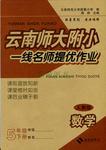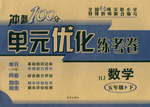题目内容
He firmly asked ________ a chance to try his luck, which at once encouraged ________.
- A.to give; the others four
- B.to be given; the other four
- C.be given; four the other
- D.giving; the four other
B

练习册系列答案
 云南师大附小一线名师提优作业系列答案
云南师大附小一线名师提优作业系列答案 冲刺100分单元优化练考卷系列答案
冲刺100分单元优化练考卷系列答案
相关题目